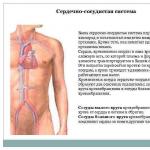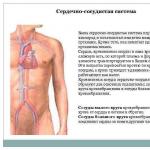Presentation on the topic "energy efficiency and energy saving." Presentation "energy saving" Presentation on the topic of energy saving week
Implementation of legal, organizational, scientific, production, technical and economic measures aimed at the effective (rational) use (and economical expenditure) of fuel and energy resources and the involvement of renewable energy sources in economic circulation


The most common way to save energy is to optimize energy consumption for lighting. Key measures to optimize energy consumption for lighting are: maximum use of daylight (increasing transparency and increasing window area, additional windows); increased reflectivity (white walls and ceiling); optimal placement of light sources (local lighting, directional lighting); use lighting devices only when necessary; increasing the light output of existing sources (replacing chandeliers, lampshades, removing dirt from lampshades, using more efficient reflectors); replacing incandescent lamps with energy-saving ones (fluorescent, compact fluorescent, LED); use of lighting control devices (motion sensors and acoustic sensors, light sensors, timers, remote control systems); implementation of an automated dispatch control system for outdoor lighting (ASDU NO); installation of intelligent distributed lighting control systems (minimizing energy costs for a given facility). The most common way to save energy is to optimize energy consumption for lighting. Key measures to optimize energy consumption for lighting are: maximum use of daylight (increasing transparency and increasing window area, additional windows); increased reflectivity (white walls and ceiling); optimal placement of light sources (local lighting, directional lighting); use lighting devices only when necessary; increasing the light output of existing sources (replacing chandeliers, lampshades, removing dirt from lampshades, using more efficient reflectors); replacing incandescent lamps with energy-saving ones (fluorescent, compact fluorescent, LED); use of lighting control devices (motion sensors and acoustic sensors, light sensors, timers, remote control systems); implementation of an automated dispatch control system for outdoor lighting (ASDU NO); installation of intelligent distributed lighting control systems (minimizing energy costs for a given facility).


Main activities: selection of optimal power of electric heating devices; optimal placement of electric heating devices to reduce the time and required power of their use; increasing heat transfer, including cleaning the surfaces of electric heating devices and electric stove burners from dirt; local (local) heating, including portable oil heaters, directional heating with reflectors; use of temperature control devices, including automatic switching on and off, power reduction depending on temperature, time timers; use of thermal accumulators; replacing electric heating with heating using heat pumps; using cookware with a wide, flat bottom that completely covers the surface of the burner. using gas stoves instead of electric cookers. use multicookers instead of cooktops, which seal the food being prepared hermetically on all sides and prevent heat from escaping. Savings - 40%. Main activities: selection of optimal power of electric heating devices; optimal placement of electric heating devices to reduce the time and required power of their use; increasing heat transfer, including cleaning the surfaces of electric heating devices and electric stove burners from dirt; local (local) heating, including portable oil heaters, directional heating with reflectors; use of temperature control devices, including automatic switching on and off, power reduction depending on temperature, time timers; use of thermal accumulators; replacing electric heating with heating using heat pumps; using cookware with a wide, flat bottom that completely covers the surface of the burner. using gas stoves instead of electric cookers. use multicookers instead of cooktops, which seal the food being prepared hermetically on all sides and prevent heat from escaping. Savings - 40%.



When choosing new audio, video, computer and other equipment, give preference, other things being equal, to a device with lower power consumption, both in operating mode and in standby mode (most modern household devices consume electricity even when turned off, because . do not turn off completely, but are transferred to the “sleep” mode “stand-by/off”); Avoid using the “sleep” mode; if the device is not used for a long time, it is better to unplug the device; If possible, replace devices that include transformer power supplies with ones similar to those with switching power supplies; do not fill the kettle full if you only need boiling water for one cup of drink; do not leave chargers for mobile devices plugged in unnecessarily (very important due to the increasing volume of such devices); try to avoid using extension cords, and if necessary, use high-quality extension cords with a large cross-section wire (with a small cross-section, the wire begins to heat up and the electricity is spent not on the useful operation of the electrical appliance, but on heating the extension cord wire); When choosing new audio, video, computer and other equipment, give preference, other things being equal, to a device with lower power consumption, both in operating mode and in standby mode (most modern household devices consume electricity even when turned off, because . do not turn off completely, but are transferred to the “sleep” mode “stand-by/off”); Avoid using the “sleep” mode; if the device is not used for a long time, it is better to unplug the device; If possible, replace devices that include transformer power supplies with ones similar to those with switching power supplies; do not fill the kettle full if you only need boiling water for one cup of drink; do not leave chargers for mobile devices plugged in unnecessarily (very important due to the increasing volume of such devices); try to avoid using extension cords, and if necessary, use high-quality extension cords with a large cross-section wire (with a small cross-section, the wire begins to heat up and the electricity is spent not on the useful operation of the electrical appliance, but on heating the extension cord wire);



The use of insulation materials in the construction and modernization of buildings. In central Russia, mm of effective insulation. Allows you to save 50-60% of heat; installation of heat-saving window structures using low-emission selective glass. Allows you to save 10-20% of heat; installation of vestibules at the entrance to the building and the use of insulated entrance and balcony doors; installation of a heat recuperator for exhaust air. Allows you to save 20-30% of heat;

From the source side: From the heating network side From the consumer side Increasing the efficiency of heat sources by reducing costs for own needs; Use of modern heat generating equipment such as condensing boilers, pyrolysis boilers and heat pumps; Use of thermal energy metering units; Use of co- and tri-generation. use of ground heat exchangers Increasing the efficiency of heat sources by reducing costs for own needs; Use of modern heat generating equipment such as condensing boilers, pyrolysis boilers and heat pumps; Use of thermal energy metering units; Use of co- and tri-generation. use of ground heat exchangers Reducing heat losses to the environment; Optimization of hydraulic modes of heating networks; Use of modern thermal insulation materials; Use of anti-vandal coatings for external installation of heating networks; Reducing leaks and unauthorized drains of coolant from pipelines. Reducing heat losses through external enclosing structures; Use of secondary energy resources; The use of local control systems for heating devices to prevent overheating; Transferring buildings to zero heat consumption mode for heating. At the same time, maintaining air parameters in the building should occur due to internal heat emissions and high thermal insulation parameters; Use of thermal energy metering units. Reducing heat losses through external enclosing structures; Use of secondary energy resources; The use of local control systems for heating devices to prevent overheating; Transferring buildings to zero heat consumption mode for heating. At the same time, maintaining air parameters in the building should occur due to internal heat emissions and high thermal insulation parameters; Use of thermal energy metering units.

In general, the menu of “technical solutions” for modernizing heat supply systems is very extensive and is far from being limited to the above list. Below is an example of a list of measures from the “Program for the Modernization of Heat Supply Systems”, a comprehensive program for the development and modernization of the housing and communal services complex of an entire region, including 22 municipalities; 126 urban and rural settlements; more than 200 individual heating systems. The main activities of the program are divided into six large groups: Conducting pre-project inspections of heat supply facilities; Construction of new boiler houses; Modernization and reconstruction of boiler houses and central heating stations; Modernization and construction of heating networks; Introduction of resource-saving technologies; To maximize the effect of the program, it is being implemented in conjunction with modernizing the thermal protection system of residential and public buildings, improving their engineering systems, measures to insulate apartments, equipping them with metering devices and efficient water taps.

Installation of water consumption meters; using water only when really necessary; installation of flush toilet cisterns with a choice of water drainage intensity; installation of automatic water flow regulators, aerators with 6 l/min regulators for faucets and 10 l/min regulators for showers collection and use of rainwater




An electric lamp that has a significantly higher light output (the ratio between luminous flux and power consumption), for example, in comparison with the most common incandescent lamps in use today. Thanks to this, replacing incandescent lamps with energy-saving ones helps save energy.

This is the first educational and analytical center in Russia, opened on April 29, 2009 by Mosenergosbyt OJSC, the goals of which are, on the one hand, to highlight and demonstrate energy-efficient equipment for both the domestic and industrial sectors, and on the other, to teach energy saving and develop a prudent attitude among the population of the Russian Federation to energy resources

Slide 1
Energy saving and energy efficiency Class hour MAOU Secondary School No. 50, Tomsk Teacher Grishkova T.P.Slide 2
 Energy saving Energy saving (energy saving) is the implementation of legal, organizational, scientific, production, technical and economic measures aimed at the efficient (rational) use (and economical expenditure) of fuel and energy resources and the involvement of renewable energy sources in economic circulation.
Energy saving Energy saving (energy saving) is the implementation of legal, organizational, scientific, production, technical and economic measures aimed at the efficient (rational) use (and economical expenditure) of fuel and energy resources and the involvement of renewable energy sources in economic circulation.
Slide 3
 Energy saving Currently, the most pressing is household energy saving (energy saving in everyday life), as well as energy saving in the housing and communal services sector. Ensuring energy saving in the agricultural sector is also relevant.
Energy saving Currently, the most pressing is household energy saving (energy saving in everyday life), as well as energy saving in the housing and communal services sector. Ensuring energy saving in the agricultural sector is also relevant.
Slide 4
 Energy efficiency Energy efficiency is the efficient (rational) use of energy resources - achieving economically justified efficiency in the use of fuel and energy resources at the existing level of development of technology and compliance with environmental protection requirements.
Energy efficiency Energy efficiency is the efficient (rational) use of energy resources - achieving economically justified efficiency in the use of fuel and energy resources at the existing level of development of technology and compliance with environmental protection requirements.
Slide 5
 Energy efficiency Efficient use of energy, or "fifth fuel" - the use of less energy to provide the same level of energy supply to buildings or industrial processes.
Energy efficiency Efficient use of energy, or "fifth fuel" - the use of less energy to provide the same level of energy supply to buildings or industrial processes.
Slide 6

Slide 7
 Start saving at home The most difficult problem in saving energy resources is to start with yourself. As the practice of energy consumption shows, savings through reasonable self-restraint and home insulation can amount to very decent amounts: up to half of the funds for utility bills.
Start saving at home The most difficult problem in saving energy resources is to start with yourself. As the practice of energy consumption shows, savings through reasonable self-restraint and home insulation can amount to very decent amounts: up to half of the funds for utility bills.
Slide 8
 Saving heat Keep heating appliances clean. Do not obscure them with furniture or curtains so that warm air can flow freely into the rooms. If technically possible, install a control knob on the heater to regulate the heating level. Install a heat-reflecting screen behind the heating device so that it transfers heat into the room rather than heating the wall. This will increase the temperature in the room by an average of two degrees.
Saving heat Keep heating appliances clean. Do not obscure them with furniture or curtains so that warm air can flow freely into the rooms. If technically possible, install a control knob on the heater to regulate the heating level. Install a heat-reflecting screen behind the heating device so that it transfers heat into the room rather than heating the wall. This will increase the temperature in the room by an average of two degrees.
Slide 9
 Saving heat If it is really necessary, then ventilate the room in the “shock” mode, opening the windows wide for a short time. During this time, the air will have time to change, but the walls and heating devices will not cool down. Check that your windows and doors are well insulated. It is known that up to half of the heat can be lost this way. Insulated windows are not necessarily expensive double-glazed windows. In most cases, modern insulating materials are sufficient for this.
Saving heat If it is really necessary, then ventilate the room in the “shock” mode, opening the windows wide for a short time. During this time, the air will have time to change, but the walls and heating devices will not cool down. Check that your windows and doors are well insulated. It is known that up to half of the heat can be lost this way. Insulated windows are not necessarily expensive double-glazed windows. In most cases, modern insulating materials are sufficient for this.
Slide 10
 Saving water installation of water consumption meters; using water only when really necessary; installation of flush toilet cisterns with a choice of water drainage intensity; use of low pressure water
Saving water installation of water consumption meters; using water only when really necessary; installation of flush toilet cisterns with a choice of water drainage intensity; use of low pressure water
Slide 11
 Saving water Repair or replace faulty plumbing fixtures, fix any leaky faucets, and always turn the faucet off tightly. This way you can seriously reduce water losses, because more than 20 liters of water leak out per day just from a dripping tap.
Saving water Repair or replace faulty plumbing fixtures, fix any leaky faucets, and always turn the faucet off tightly. This way you can seriously reduce water losses, because more than 20 liters of water leak out per day just from a dripping tap.
Slide 12
 Saving water When washing dishes, do not keep the tap open all the time. It is quite possible to clean plates and dishes with detergent in the sink with the tap closed, and just rinse under running water. Don't overdo the detergent. Excessive use of it increases the time it takes to rinse dishes and the amount of water required for this.
Saving water When washing dishes, do not keep the tap open all the time. It is quite possible to clean plates and dishes with detergent in the sink with the tap closed, and just rinse under running water. Don't overdo the detergent. Excessive use of it increases the time it takes to rinse dishes and the amount of water required for this.
Slide 13
 Electricity When leaving, turn off the lights! Turn off the lights if you leave the room, even temporarily. This simple rule should become a good habit for you. Consider replacing your traditional incandescent light bulbs with energy-saving ones. The cost of purchasing them will be recouped through savings on payments.
Electricity When leaving, turn off the lights! Turn off the lights if you leave the room, even temporarily. This simple rule should become a good habit for you. Consider replacing your traditional incandescent light bulbs with energy-saving ones. The cost of purchasing them will be recouped through savings on payments.
Slide 14
 Electricity Try to use natural light as much as possible. Make sure your window panes are clean, and during the day simply remove the curtains on your windows.
Electricity Try to use natural light as much as possible. Make sure your window panes are clean, and during the day simply remove the curtains on your windows.
Slide 15
 Saving electricity Televisions, computers, and household appliances consume electricity even in “sleep” mode. Use “pilot sockets” with a power shutoff button.
Saving electricity Televisions, computers, and household appliances consume electricity even in “sleep” mode. Use “pilot sockets” with a power shutoff button.
Slide 16
 Saving Energy Make sure your refrigerator is installed in a cool place, the seals on the refrigerator door are intact, and the back of the refrigerator is clean. Do not place the refrigerator close to the wall, leave a gap for ventilation. Defrost your refrigerator regularly. Refrigerators and freezers use more electricity when they are filled with ice. Do not place hot or warm foods in the refrigerator; let them cool to room temperature first.
Saving Energy Make sure your refrigerator is installed in a cool place, the seals on the refrigerator door are intact, and the back of the refrigerator is clean. Do not place the refrigerator close to the wall, leave a gap for ventilation. Defrost your refrigerator regularly. Refrigerators and freezers use more electricity when they are filled with ice. Do not place hot or warm foods in the refrigerator; let them cool to room temperature first.
Slide 17
 Saving energy If the contact between the burner and the cookware is poor, much more heat is consumed. The surface of the burner should be smooth and the pan should have a smooth, flat bottom.
Saving energy If the contact between the burner and the cookware is poor, much more heat is consumed. The surface of the burner should be smooth and the pan should have a smooth, flat bottom.
Slide 18
 Saving energy Remove scale from inside the electric kettle in a timely manner. It conducts heat almost 30 times worse than metal, so it significantly increases the amount of energy required to boil water.
Saving energy Remove scale from inside the electric kettle in a timely manner. It conducts heat almost 30 times worse than metal, so it significantly increases the amount of energy required to boil water.
Slide 19
 Saving Energy Save energy when washing by setting your washing machine to a lower temperature. Try to load the washing machine completely. This can reduce electricity consumption by 80%.
Saving Energy Save energy when washing by setting your washing machine to a lower temperature. Try to load the washing machine completely. This can reduce electricity consumption by 80%.
Slide 20
 Saving energy When purchasing electrical appliances, pay attention to their energy efficiency class. The most economical electrical appliances are class “A”. Modern technology uses energy more economically.
Saving energy When purchasing electrical appliances, pay attention to their energy efficiency class. The most economical electrical appliances are class “A”. Modern technology uses energy more economically.
Slide 2
Building an energy efficient society in Russia involves both the formation of an energy efficient management system with optimal minimized costs of energy resources and financial resources, and ensuring a worthy contribution of the energy factor to the economic development of the country and to improving the standard of living of its population. The solution to this problem involves, along with reducing the specific energy intensity and energy cost of produced GDP, the active participation of the country's energy sector in the social improvement of society and in creating conditions for the economic well-being of the population, as well as environmental protection. 2
Slide 3
Comparison of the energy intensity of the GDP of Russia and foreign countries or a group of countries The specific energy intensity of the Russian economy is more than twice the world average. 3
Slide 4
By implementing the Energy Strategy, Russia reduced the specific energy intensity of the economy in 2001-2008. by 33% Relative dynamics of specific energy intensity of the Russian economy 4
Slide 5
The technological potential of energy saving in Russia is almost 45% of the country's total energy consumption (estimated at the level of 2007) Technological potential of energy saving (2007) and assessment of the levels of its implementation, taking into account the growth of production and the development of new technologies in the future 5
Slide 6
Structural energy saving is formed under the influence of market mechanisms of demand due to the rapid development of high-income and low-energy-intensive types of economic activities such as processing, high-tech industries, services (banking, trade, communications, information, utilities, transport, etc.), etc. with a decrease in the share of energy-intensive sectors such as fuel and energy complex, metallurgy, etc. 6
Slide 7
Forecast assessment of the dynamics of the structure of industrial production for the future 7 Industry, total
Slide 8
Relative specific energy intensity of industry and its branches 8
Slide 9
Assessment of the dynamics of the specific energy intensity of the economy based on the development of the energy strategy for the period until 2030. 9 Forecast of the dynamics of the specific energy intensity of GDP and domestic demand for primary energy carriers in Russia until 2030.
Slide 10
Forecast of the dynamics of specific electricity intensity of GDP and domestic demand for electricity in Russia until 2030 10
Slide 11
Assessment of demand and energy saving of primary fuel and energy resources in Russia until 2030 in accordance with the baseline scenario ES-2030 11
Slide 12
Energy cost of produced GDP in the period up to 2030 (forecast estimates) 12
Slide 13
In market economic conditions, a financial assessment of the specific energy intensity of the economy is important - the energy cost of GDP, taking into account such factors as prices for energy resources (domestic and export), the structure of fuel and energy resources, volumes of consumption and export of fuel and energy resources. Due to the financial crisis in the period 2010-2012. The energy cost of GDP may increase slightly due to negative parameters of the dynamics of changes in GDP and specific energy intensity, as well as rising energy prices in the country. At the same time, in the future, a decrease in the energy cost of GDP is projected to be more adequate to a decrease in the specific energy intensity of the economy (see slide 9) due to a decrease in the growth rate of energy prices. 13
Slide 14
Key indicators and indicators of energy efficiency and energy use according to forecast estimates for the period up to 2030 *) 14 *) – taking into account estimates of the impact of the global economic crisis
Slide 15
Slide 16
16 SYSTEM OF MAIN MEASURES OF THE STATE IN THE FIELD OF IMPROVING ENERGY EFFICIENCY (proposals of the State Institution “Institute of Energy Strategy”) Legislative and legal measures: Adoption of Federal Laws: On energy saving; On energy security; On indicative planning of fuel and energy resources; About federal energy systems; Additions to the Tax Code in order to stimulate energy saving. About renewable energy sources; About heat supply. 2. Regulatory and program measures: Development of a state energy saving program; Development of regional and sectoral energy saving programs; Development of a system of energy consumption standards in energy-intensive activities as the basis for a system of sanctions for energy waste; Creation of normative and methodological acts for energy surveys, energy services, business support in this area; Regulation of budgetary (credit) participation in the implementation of energy saving programs; State support for market exchange and spot trading in energy resources; Formation of a system of information and propaganda in the field of energy saving and energy efficiency. 3. Organizational measures: Determine the federal government body authorized to implement energy-saving policies in the country; Create a Russian information and economic system for energy efficiency; Create a system of state energy expertise; Improve the system of state statistical reporting in the field of energy use; Establish Russian state awards for achievements in the field of energy efficiency.
View all slides
Slide 2
Teach the reasonable, careful use of energy in everyday life, reducing its unjustified losses. Purpose of the study
Slide 3
Tasks:
Study the literature on the stated topic and select the necessary theoretical material from various sources; Study the types of energy sources, features of energy consumption in Russia and the reasons for the need to save energy in everyday life; Get acquainted with ways to save energy at home; Find out whether energy resources are used economically in the families of my classmates and students at our school; Develop recommendations for energy saving.
Slide 4
Energy saving is a new “source” of energy!
We rarely think about how and how much energy we spend to solve specific problems. We often use too much energy where we could save it. My research will help you understand the physical principles of energy conservation and apply them in practice.
Slide 5
Irrational, unlimited energy consumption has brought humanity to the brink of environmental disaster. For the life with comfort that we so strive for, we have to pay with the destruction of forests and the flooding of cities. This is a very serious problem. The simplest solution that benefits most of us from an economic point of view is this: learn to use the energy at our disposal as efficiently and environmentally friendly as possible!
Slide 6
Coal Oil Gas Peat Nuclear energy Solar energy Wind River water energy Biomass Geothermal Energy sea energy Industrial tides and household waste Constantly replenished as a result of natural processes RENEWABLE On a geological scale, replenished over millions of years NON-RENEWABLE ENERGY SOURCES
Slide 7
Slide 8
Energy saving in everyday life is the economical use of natural resources and, as a result, saving money on utility bills. The largest consumers of electricity in public utilities are residential buildings. Of all energy consumed in everyday life, 79% is used for space heating, 15% is spent on thermal processes (heating water, cooking, etc.), 5% of energy is consumed by electrical household appliances and 1% of energy is spent on lighting, radio and television. technique.
Slide 9
Basic principles of energy saving in everyday life:
Use energy efficiently. Do not use energy of a higher quality than necessary. It has been established that 15-20% of electricity consumed in the home is wasted due to simple mismanagement. The largest energy costs in an apartment come from operating: an electric stove, a washing machine, a refrigerator, an electric kettle, a microwave, an iron and a computer.
Slide 10
Do you know what energy saving is? Do you save energy at home? What energy saving methods do you know?
Slide 11
Slide 13
Saving electrical energy
Slide 14
Saving water
Slide 15
Gas saving
Slide 16
Conclusion
There is an opportunity for energy saving in every home, in every apartment in every family. Energy-saving measures really allow you to save energy, energy resources, and are the key to improving living standards and preserving the environment. These events do not require material costs and depend only on the personal awareness and interest of people. Energy saving can be considered a new source of energy.
Slide 17
Bibliography:
Sergeev S.K., Izmailov V.V. and others. Energy saving. -Tver, Alfa-Press, 2004. Korablev V.P. Saving electricity in everyday life. –Moscow, “Energoatomizdat”, 1987. Polonsky, V. M. Energy saving: textbook. allowance / V. M. Polonsky, M. S. Trutneva. – M.: Publishing house ASV, 2005. – 160 p. Energy saving at home: 38 ways: http://portal-energo.ru/blog/details/id/25 Tips on energy saving at home: http://www.technopark.by/iccee/ces/ Measures to save water at home: http://www.e-audit.ru/inlife/water.shtml
Slide 18
Thank you for your attention!
View all slides





